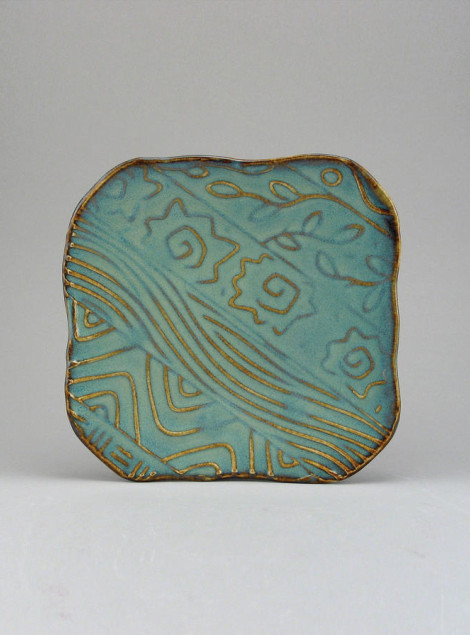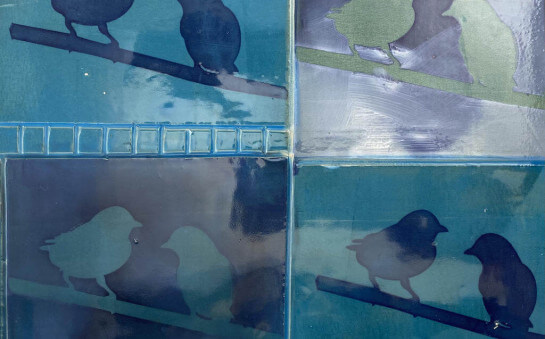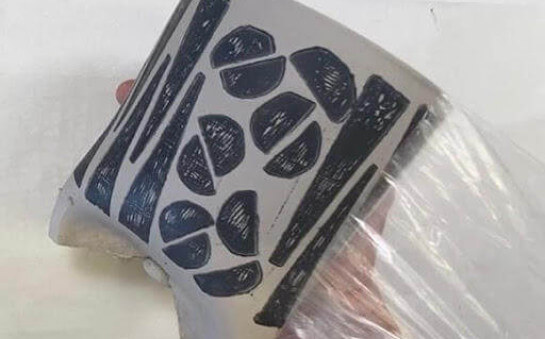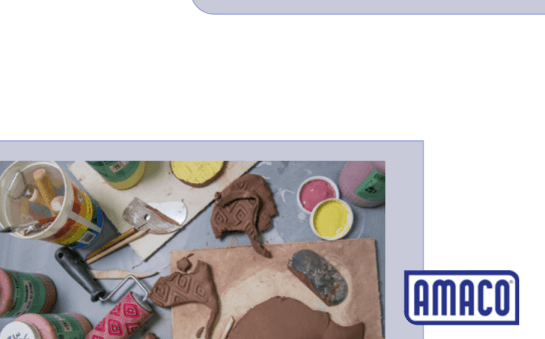Plates Everyone Can Make

How to make easy textured plates.
Supplies
- Drape Molds
- Any Firing Clay
- Any Glaze (Match to Chosen Clay)
- Wire Clay Cutter
- Fettling Knife
- Hardwood Modeling Tools
- Potter's Needle Tool
- Textured Slab Mold
- Rubber Rib No. 2
- Sure Form
- Textured Pony Roller
- Potter's Wheel
- Giffin Grip

Place Slab on Plate Mold
Lift plate from Textured Slab Mold and place, centered, on the Plate Drape Mold. Gently press plate shape to the curve of the Plate Drape Mold.
Cut Template
Cut newspaper for a pattern slightly smaller than the Plate Drape Mold.
Make Slab and Cut
Roll Slab to 3/8″ to 1/2″ thickness and large enough for at least one plate per slab. Place newspaper pattern on slab and cut out plate using a fettling knife (a plastic picnic knife works well for elementary age artists). Save leftover clay for feet (balls of clay for feet by hand) or foot (coil of clay for foot by wheel).
Place Slab on Texture Mold
Press plate shape onto Textured Slab Mold with small sand bag using a firm rolling motion from center to edges, all the way around.
Roll
Roll the plate shape with the flat roller of a Pony Roller to smooth and press further into Textured Slab Mold.
Bevel Edges
Bevel edges of plate shape with the curved roller of the Pony Roller.
Texture Back of Slab
Roll clay texture worm or other texture tools (wooden stamps, rubber stamps, plaster stamps, found objects, etc.) onto back of plate shape.
Ball Feet By Hand
Roll 4 1" balls of clay. Place the balls of clay evenly on the plate shape on the Plate Drape Mold and mark where they go. Place the feet approximately two thirds to three fourths of the way from center to rim of plate shape. The plate, when right side up, must rest on the feet and not the underside of the plate shape. Tip: to avoid ‘tippy’ plate place feet closer to the rim of the plate than the center. Score both the feet and where the feet go on the plate and attach feet to plate shape with slip or Apple Cider vinegar. Press thumb into center of each ball of clay foot to make thumb print feet. Level feet using wooden bat placed evenly (level to table) on feet and gently pound twice with fist in center of the bat and then remove bat.
Foot On Wheel
Roll 1/2″ coil of clay from leftover slab clay or use 1/2″ round die in an extruder to get coil. Place Plate Drape Mold with centered plate shape into Giffin Grip on Potter’s Wheel and score plate shape and coil.
Attach Coil Foot
Attach coil to plate shape with slip or vinegar and cut off excess coil with needle tool using a diagonal cut, score and glue attach ends.
Join
With wheel turning, press coil gently to attach to plate. Seal each side of coil to plate using the curved end of the Hardwood Modeling Tool. This procedure is slow and takes many revolutions on each side to seal coil to the plate shape.
Shape and Trim Foot
With wheel turning, trim coil to make level foot using a Trimming tool.
Check Depth of Foot
Make sure the foot is tall enough for the plate, when right side up, to rest completely on the foot and not on the plate shape. This can be easily checked by placing a pencil on the foot so the pencil sits across the area inside of the foot. There needs to be space under the pencil all the way from one side of the foot to the other.
Refine Edge
When plate is firm enough to handle, hold plate, right side up, to curve and smooth edges with a Sure Form tool.
Clean Edge
Smooth shaped edges with a chamois. A wet chamois with most of the water squeezed out works best.
Dry and Fire
When plate is dry, bisque fire to appropriate temperature for the Amaco® clay used then glaze and fire to appropriate temperature for the Amaco® glaze used.



